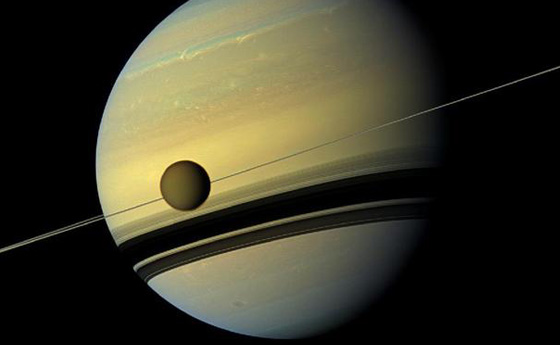
Nexus: a series of connections, a central point. That is what NASA hopes to create via a new initiative – called NExSS (NASA Exoplanet System Science) – that brings together teams of scientists from various institutions and disciplines. The collaboration will be looking for indicators of alien life – signs of living microbes, or something even more intriguing – on distant planets. NASA calls the new coalition a virtual institute and emphasizes it will use a systems science approach – that is, a big-picture approach that cuts across many different scientific disciplines – to work toward an answer to what is perhaps our world’s most intriguing question: are we alone? NASA announced the new collaboration this week (April 21, 2015).
NASA says that NExSS will tap into the collective expertise from each of the science communities supported by NASA’s Science Mission Directorate:
• Earth scientists will develop a systems science approach by studying our home planet.
• Planetary scientists will apply systems science to a wide variety of worlds within our solar system.
• Heliophysicists will look in detail at how the sun interacts with orbiting planets.
• Astrophysicists will provide data on the exoplanets and host stars.
The announcement, by the way, comes in the same week that astronomers at the European Southern Observatory in Chile said they’ve now acquired the first direct visible light spectrum from an exoplanet. This technique will someday be used to find biosignatures – signs of life – on these distant worlds. Read more about that research here.
Enjoying EarthSky so far? Sign up for our free daily newsletter today!

Hiroshi Imanaka is a research scientist at the SETI Institute and a specialist in the chemistry of planetary atmospheres. He’s part of the NExSS team. He said in a statement from the SETI Institute on April 21:
One major thrust of the exoplanet community has been to find worlds orbiting in the so-called habitable zone. That’s the range of distances from a star where a planet could have temperatures permitting liquid oceans.
However, liquid oceans are not the only condition under which life can exist. Some of the moons of Jupiter and Saturn are examples of places that are not in the conventional habitable zone, but might be nonetheless habitable.
We want to take further steps to characterize habitable environments that lie beyond the solar system.
The study of planets around other stars – exoplanets – is a relatively new field. The first exoplanet orbiting a star like our sun – 51 Pegasi b – was found in 1995. Since the launch of NASA’s Kepler space telescope six years ago, thousands of exoplanet candidates have been found, and it’s this sudden storm of new worlds that has prompted efforts to learn if any exhibit clues to the presence of biology, such as oxygen or methane in their atmospheres.
Imanaka and his colleagues said in their statement that they’ve investigated one world that might give useful clues in this endeavor: Titan, Saturn’s largest moon. Imanaka said:
We’ve long studied the organic chemistry of this intriguing moon, one that’s swathed in a thick smoggy atmosphere and has lakes of liquid methane and ethane. We’ve investigated the organic haze in Titan’s atmosphere.
It’s possible that Titan could have life. I’m not going to say no.
But what’s certain is that Titan can teach us about a pre-biotic world, as it’s producing the most complex organic compounds known beyond Earth. And thanks to its exceedingly low temperatures, all the chemical reactions on Titan are sluggish. It’s a slow-motion world, and that’s why it can tell us about the conditions on the early Earth – and maybe on some exoplanets, too.
Being part of the NExSS network will allow us to apply this extensive knowledge of Titan to the examination of smoggy exoplanet atmospheres that might be similar.

Overall, NExSS will be led by Natalie Batalha of NASA’s Ames Research Center in Moffett Field, California; Dawn Gelino with NExScI, the NASA Exoplanet Science Institute at the California Institute of Technology in Pasadena; and Anthony del Genio of NASA’s Goddard Institute for Space Studies in Greenbelt, Maryland.
The NExSS project will also include team members from 10 different universities and two research institutes.
These teams were selected from proposals submitted across NASA’s Science Mission Directorate.
Bottom line: A new NASA collaboration – called NExSS (NASA Exoplanet System Science) – will take a systems science approach to the problem of finding life on planets around other stars.











